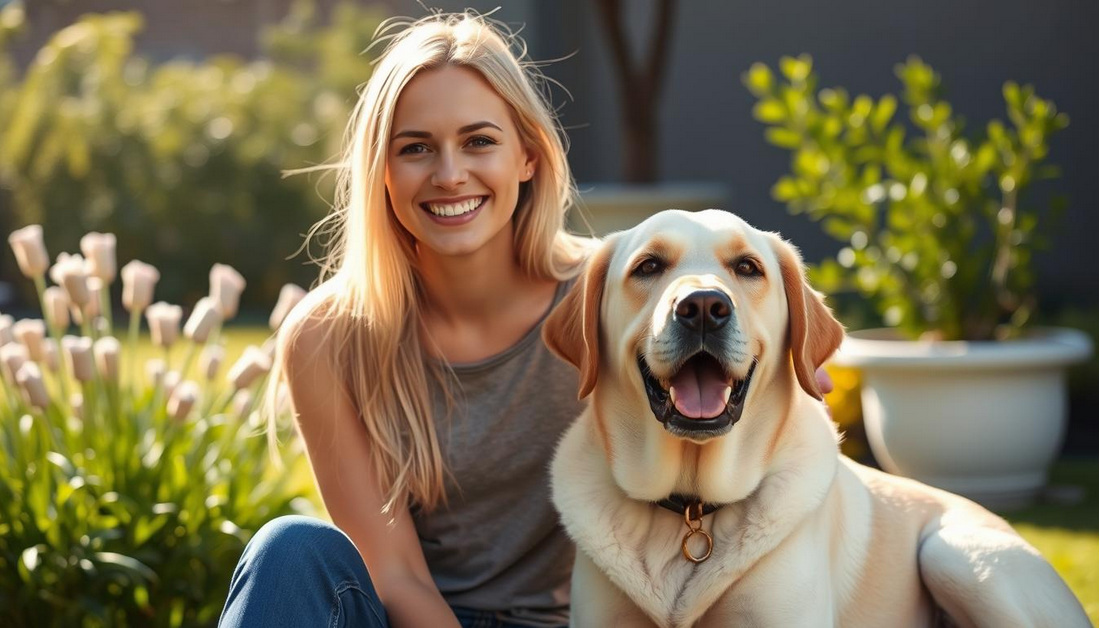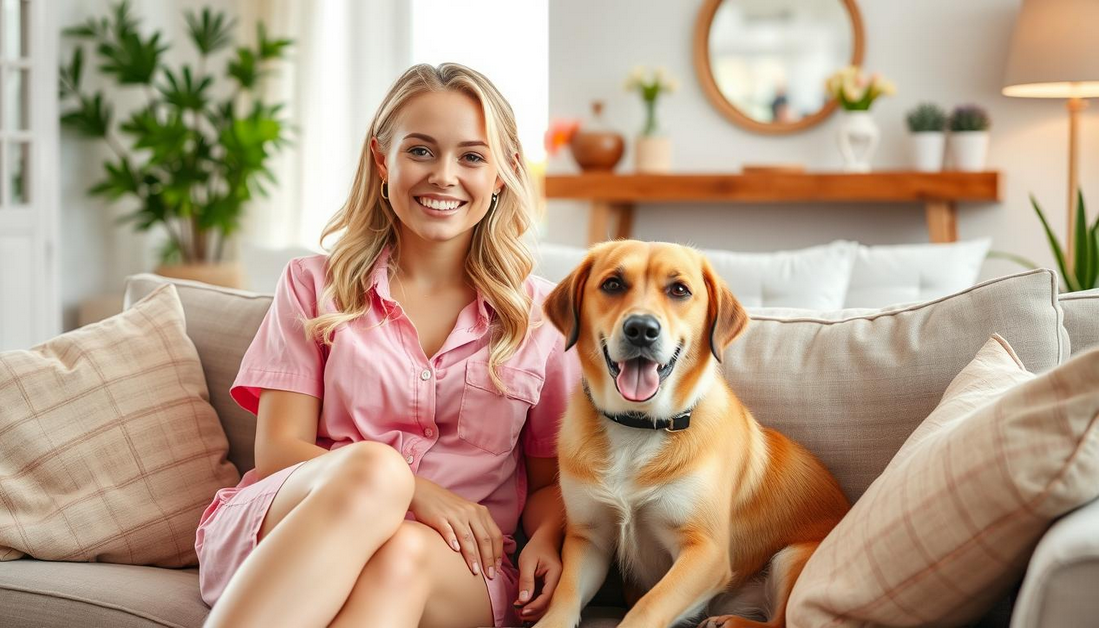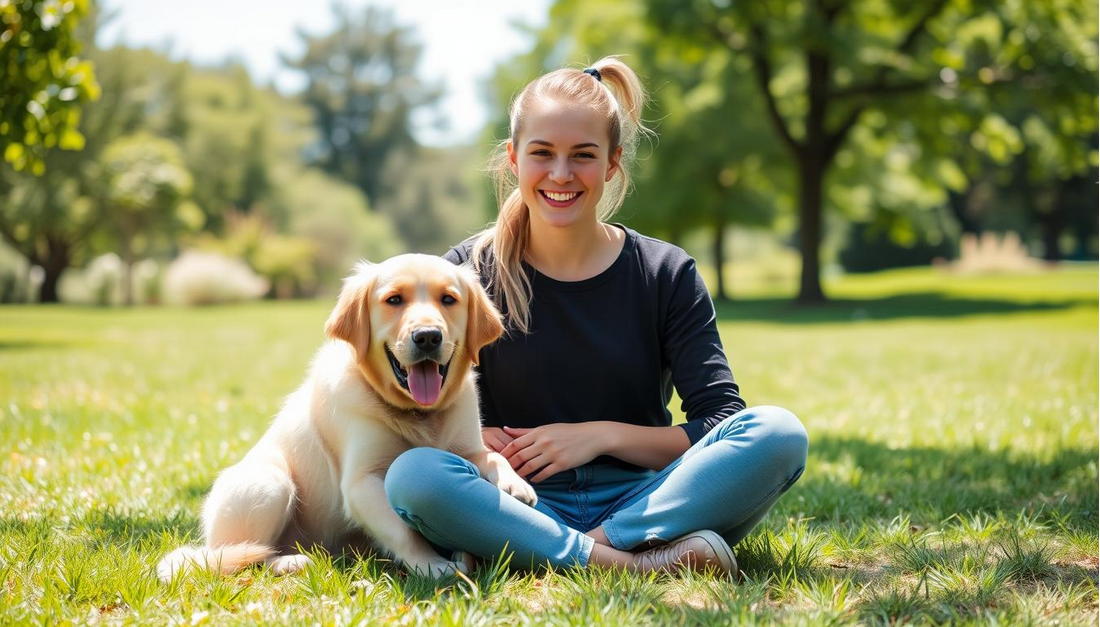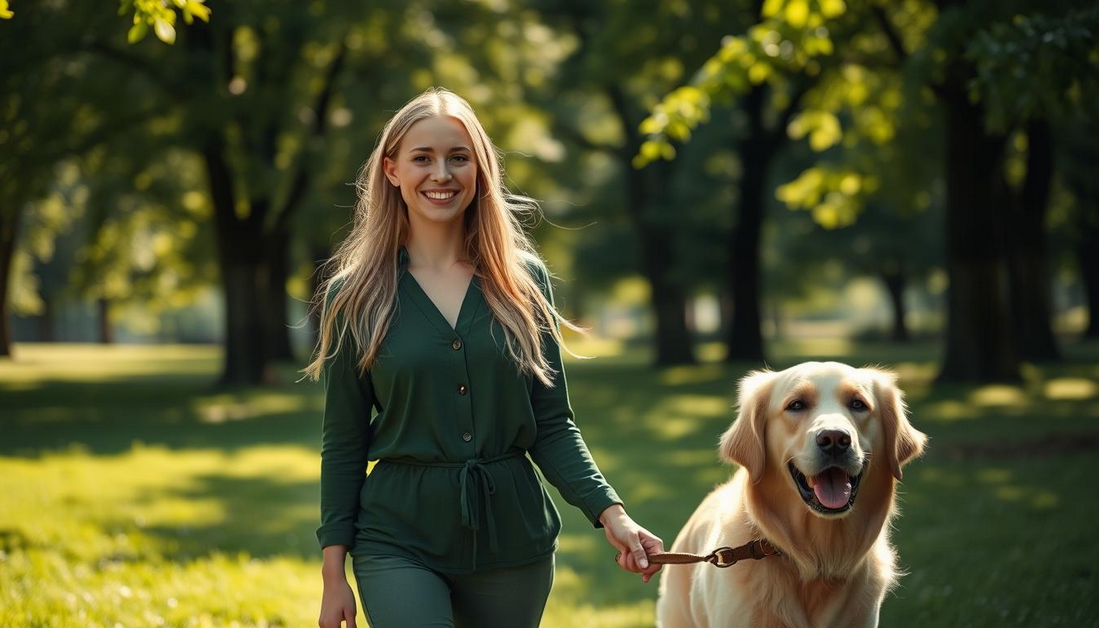India customers to view on amazon.in
How To Introduce Dogs to New Environments?
Helping your dog adjust to new surroundings can be a daunting task. It requires patience, a deep understanding of canine behavior, and a gradual approach to ensure a smooth transition.
- Understanding Your Dog’s Response to New Environments
- The Importance of Gradual Exposure
- Essential Equipment for Introducing Dogs to New Places
- How To Introduce Dogs to New Environments Safely
- Helping Your Dog Adapt to a New Home
- Introducing Dogs to Outdoor Environments
- Navigating Urban Settings with Your Dog
- Socializing Your Dog with New People and Animals
- Managing Dog Anxiety in Unfamiliar Settings
- Special Considerations for Rescue Dogs
- Traveling with Your Dog
- Conclusion: Creating Confident Canine Explorers
- FAQ
- How long does it take for a dog to adjust to a new home?
- What are some signs that my dog is stressed in a new environment?
- How can I help my dog feel more comfortable in new environments?
- What should I do if my dog is scared of new places?
- How can I socialize my dog with new people and animals?
- What are some tips for traveling with my dog?
- How can I help my rescue dog adjust to a new home?
- What are some natural calming techniques for dogs in new environments?
- When should I consider professional help for my dog’s anxiety?

Easing your dog into new environments is crucial for their emotional well-being and confidence. By understanding your dog’s needs and reactions, you can create a positive experience that will help your dog become a confident explorer in unfamiliar settings.
Key Takeaways
- Gradual exposure to new environments helps reduce dog anxiety.
- Positive reinforcement is key to successful dog socialization.
- Understanding canine body language is crucial for a smooth transition.
- Patience is essential when introducing dogs to new settings.
- Creating a familiar environment in new settings can help ease the transition.
Understanding Your Dog’s Response to New Environments
Understanding how dogs respond to new environments is vital for a smooth transition. Dogs exhibit various behaviors when introduced to unfamiliar settings, and recognizing these reactions is crucial for their comfort and safety.
Reading Canine Body Language
Canine body language is a significant indicator of a dog’s emotional state in new environments. Stress signals and signs of curiosity are both conveyed through body language.
Stress Signals to Watch For
Signs of stress in dogs include tucked tails, flattened ears, and avoidance behaviors. Recognizing these signals early can help prevent anxiety escalation.
Signs of Curiosity and Comfort
Conversely, dogs feeling curious or comfortable may display relaxed postures, wagging tails, or exploratory behaviors. Encouraging these positive behaviors can enhance their experience in new environments.
Individual Temperament Differences
Each dog’s temperament influences how they react to new settings. Understanding these differences is key to a successful introduction.
Shy vs. Confident Dogs
Shy dogs may require more gradual exposure and gentle handling, while confident dogs might adapt more quickly to new surroundings.
Age and Experience Factors
A dog’s age and previous experiences also play a significant role in their response to new environments. Younger dogs may be more adaptable, whereas older dogs might be more set in their ways.

The Importance of Gradual Exposure
To help your dog feel comfortable in new environments, it’s crucial to adopt a gradual exposure strategy. This approach allows your dog to become familiar with new surroundings at their own pace, reducing the risk of anxiety and stress.
Why Rushing Can Backfire
Rushing the introduction process can lead to negative experiences for your dog. When exposed to new environments too quickly, dogs may become overwhelmed, leading to fear or aggression. Gradual exposure helps prevent these negative outcomes by allowing your dog to explore new spaces without feeling rushed or threatened.
Creating Positive Associations
Creating positive associations is a critical component of gradual exposure. This can be achieved through various methods, including:
- Using treats and rewards effectively
- Pairing new experiences with favorite activities
Using Treats and Rewards Effectively
Treats and rewards are powerful tools for creating positive associations. By rewarding your dog with treats and praise when they exhibit calm behavior in new environments, you reinforce positive experiences. For example, when introducing your dog to a new park, reward them with treats for calmly exploring the area.
Pairing New Experiences with Favorite Activities
Another effective strategy is to pair new experiences with activities your dog enjoys. For instance, if your dog loves playing fetch, bring their favorite ball to the new environment to create a positive association.
| Strategy | Description | Benefit |
|---|---|---|
| Using Treats and Rewards | Rewarding calm behavior with treats and praise | Reinforces positive experiences |
| Pairing with Favorite Activities | Combining new environments with enjoyable activities | Creates positive associations |
Setting Realistic Expectations
It’s essential to set realistic expectations when introducing your dog to new environments. Every dog adapts at their own pace, and some may require more time than others. Be patient and adjust your approach as needed to ensure a successful introduction.

Essential Equipment for Introducing Dogs to New Places
When introducing your dog to new environments, having the right equipment is crucial for a smooth and stress-free experience. The right gear can help ensure your dog’s safety and comfort, making the introduction process more enjoyable for both you and your pet.
Proper Leash and Harness Options
A proper leash and harness are essential for maintaining control and ensuring your dog’s safety in new environments. Look for a harness that is comfortable and adjustable, allowing for a full range of motion. A retractable leash can be useful in open areas, giving your dog more freedom while still maintaining control.
Comfort Items from Home
Bringing comfort items from home can provide your dog with a sense of security in new environments. These items can help reduce stress and anxiety, making the transition smoother.
Familiar Blankets and Toys
Familiar blankets and toys can offer comfort to your dog in unfamiliar settings. Bringing a favorite toy or blanket can provide reassurance and help your dog feel more at ease.
Scent Articles for Security
Scent articles, such as a piece of clothing that smells like you, can provide additional security for your dog. These familiar scents can be calming and help reduce anxiety in new environments.
Portable Water and Feeding Supplies
Portable water and feeding supplies are crucial for maintaining your dog’s comfort and well-being during outings. Bringing a collapsible water bowl and a supply of your dog’s regular food can help prevent digestive upset and keep your dog hydrated.

By having the right equipment, you can help ensure a successful introduction to new environments for your dog. Remember to choose gear that is comfortable, safe, and suitable for your dog’s needs.
How To Introduce Dogs to New Environments Safely
Helping your dog adjust to new places requires patience, understanding, and a well-planned strategy to ensure their safety and comfort. Introducing dogs to new environments safely is crucial for their emotional and psychological well-being.
Pre-Visit Preparation Steps
Before taking your dog to a new location, it’s essential to prepare them for the experience. This involves several key steps:
- Research and Environment Assessment: Understand the layout, noise levels, and potential hazards of the new environment.
- Energy Management Before Visits: Ensure your dog is not overly tired or hyperactive before introducing them to a new place.
As noted by dog trainers, “A well-prepared dog is more likely to have a positive experience in new environments.” Proper preparation can make a significant difference in your dog’s adaptability.
Managing the First Few Minutes
The initial moments in a new environment are critical. Keep your dog on a leash and allow them to explore at their own pace. Monitor their body language closely for signs of stress or anxiety.

When to Retreat and Try Again
If your dog appears overwhelmed, it’s crucial to retreat and try again another time. Forcing them to stay can create negative associations. Retreating when necessary helps maintain a positive experience.
“Patience and gradual exposure are key to helping your dog feel comfortable in new environments.”
By following these guidelines, you can help your dog adapt to new environments safely and effectively.
Helping Your Dog Adapt to a New Home
Helping your dog adjust to a new home involves creating a comfortable environment and establishing routines that provide a sense of security. Adapting to a new home can be a challenging experience for dogs, requiring patience, understanding, and a structured approach.

Creating a Safe Space
Creating a safe space or comfort zone within the new home can provide your dog with a sense of security. This area should be quiet, comfortable, and familiar, with items such as their bed, favorite toys, and perhaps an article of clothing that smells like you.
Setting Up a Comfort Zone
To set up a comfort zone, start by designating a specific area in the new home where your dog can retreat when feeling overwhelmed. Make this area inviting by adding familiar comforts.
Managing Access to Different Areas
Managing access to different areas of the new home can help prevent your dog from becoming overwhelmed. Initially, limit their access to one or two rooms, gradually increasing their freedom as they become more comfortable.
Establishing New Routines
Establishing new routines is crucial for helping your dog adjust to the new home. Maintain regular times for feeding, exercise, and play to provide a sense of stability and normalcy.
“Dogs thrive on routine, and maintaining familiar schedules can significantly reduce their stress during a move.”
Dr. Jane Smith, Veterinarian
Patience During the Adjustment Period
It’s essential to be patient during the adjustment period, understanding that every dog adapts at their own pace. Some dogs may settle in quickly, while others may take longer.
Timeline Expectations
While every dog is different, a general guideline is to allow at least a few weeks for your dog to start feeling comfortable in their new environment. Be prepared for an adjustment period that can last anywhere from a few weeks to a few months.
Addressing “Won’t Settle” Behaviors
If your dog is having trouble settling, try to identify the cause of their anxiety. It could be due to the new environment, changes in your work schedule, or other factors. Adjusting your approach as needed can help your dog feel more at ease.
| Adjustment Tips | Description | Benefits |
|---|---|---|
| Create a Safe Space | Designate a quiet area with familiar comforts | Reduces stress, provides security |
| Establish Routines | Maintain regular feeding, exercise, and play times | Provides stability, reduces anxiety |
| Manage Access | Limit access to new areas gradually | Prevents overwhelm, promotes exploration |
Introducing Dogs to Outdoor Environments
Outdoor environments offer a myriad of new experiences for dogs, ranging from parks and open spaces to beaches and hiking trails. Each of these settings provides unique opportunities for exercise, socialization, and fun, but they also come with their own set of challenges.
Parks and Open Spaces
Parks and open spaces are ideal for letting your dog run freely and socialize with other dogs. When introducing your dog to these areas, it’s essential to ensure they are comfortable around other people and dogs.
- Start with less crowded times to avoid overwhelming your dog.
- Keep your dog on a leash until you’re sure they will respond to recall commands.
Beaches and Water Areas
Beaches and water areas can be a great source of enjoyment for dogs, but they require special consideration, especially if your dog is swimming for the first time.
First-Time Swimming Considerations
Not all dogs are natural swimmers, so it’s crucial to introduce them to water gradually.
- Begin in shallow waters where your dog can stand.
- Encourage them to enter the water with treats or toys.
Safety Around Natural Water Sources
Always be aware of the potential hazards such as strong currents, sharp rocks, or marine life.
- Keep a close eye on your dog at all times.
- Know the local rules and regulations regarding dogs in water areas.

Hiking and Nature Trails
Hiking with your dog can be a wonderful way to explore nature together, but it requires preparation and awareness of your surroundings.
Wildlife Awareness
Be aware of the local wildlife and the potential for encounters.
- Keep your dog on a leash to prevent them from chasing wildlife.
- Make noise while hiking to avoid surprising animals.
Trail Etiquette with Dogs
Being considerate of other trail users is crucial.
- Yield to other hikers and keep your dog under control.
- Clean up after your dog to maintain trail cleanliness.
| Outdoor Location | Key Considerations | Tips for a Successful Visit |
|---|---|---|
| Parks and Open Spaces | Socialization, Crowd Comfort | Visit during less crowded times, Keep on leash initially |
| Beaches and Water Areas | Swimming Ability, Water Safety | Gradual introduction to water, Monitor for hazards |
| Hiking and Nature Trails | Wildlife Encounters, Trail Etiquette | Keep on leash, Make noise while hiking |
By considering these factors and tips, you can help ensure that your dog has a positive and enjoyable experience in various outdoor environments.
Navigating Urban Settings with Your Dog
Introducing your dog to urban environments can be challenging, but with the right approach, it can also be a rewarding experience. Urban settings present a range of new experiences for dogs, from busy streets and public transportation to dog-friendly businesses.
Busy Streets and Sidewalks
Navigating busy streets with your dog requires attention to their comfort and safety. Desensitizing your dog to traffic is a crucial step.
Traffic Desensitization
Start by exposing your dog to the sounds of traffic from a safe distance, gradually increasing the proximity over time.
Crowd Management Techniques
Teach your dog to remain calm in crowded areas by practicing obedience commands in busy environments.
Public Transportation
Using public transportation with your dog can be convenient, but it requires preparation. Ensure your dog is comfortable in a carrier or on a leash.
Dog-Friendly Businesses
Many businesses now welcome dogs, but it’s essential to understand the expectations for behavior in these environments.
Behavior Expectations in Stores
Keep your dog on a leash and ensure they are well-behaved in stores to avoid any issues.
Restaurant and Patio Etiquette
When dining out, keep your dog calm and under control, especially in outdoor patio areas.

| Urban Challenge | Tips for Success |
|---|---|
| Busy Streets | Desensitize your dog to traffic noise, practice walking on a leash. |
| Public Transportation | Use a carrier or keep on a short leash, practice boarding and exiting. |
| Dog-Friendly Businesses | Keep your dog on a leash, ensure good behavior. |
Socializing Your Dog with New People and Animals
Introducing your dog to new people and animals requires careful planning to ensure positive experiences. Effective socialization is crucial for your dog’s development, helping them become confident and calm in various social settings.
Controlled Introduction Techniques
When introducing your dog to new individuals, whether they are people or animals, it’s essential to do so in a controlled manner. This helps prevent overwhelming your dog and reduces the risk of negative experiences.
Meeting New Dogs Safely
When meeting new dogs, start by keeping the dogs on leashes or in separate areas to allow them to become familiar with each other’s scents and sounds without the risk of an immediate face-to-face encounter.
Introducing to Children and Strangers
When introducing your dog to children or strangers, ensure that the interactions are gentle and calm. Teach children how to interact with dogs gently and respectfully, and advise strangers to let your dog approach them rather than forcing interaction.
Taking Your Dog to a Friend’s House
Visiting a friend’s house can be a great way to socialize your dog. Before the visit, discuss with your friend how to manage the introduction and ensure that their home is dog-friendly.
Managing Group Settings
In group settings, such as dog parks or family gatherings, monitor your dog’s behavior closely. If your dog appears stressed or overwhelmed, it’s okay to remove them from the situation and try again another time.

| Socialization Tip | Description | Benefit |
|---|---|---|
| Gradual Introduction | Introduce new people or dogs gradually. | Reduces stress and anxiety. |
| Positive Reinforcement | Reward calm behavior. | Encourages positive interactions. |
| Monitor Body Language | Watch for signs of stress or fear. | Prevents negative experiences. |
Managing Dog Anxiety in Unfamiliar Settings
New environments can trigger anxiety in dogs, making it essential to adopt effective management strategies. Dog anxiety in new places is a common issue that affects many pets, causing distress for both the animals and their owners.
Natural Calming Techniques
Several natural calming techniques can help alleviate dog anxiety. These methods focus on providing comfort and reducing stress without relying on medication.
Pressure Wraps and Tactile Comfort
Pressure wraps, such as Thundershirts, provide gentle pressure that can be calming for dogs. This tactile comfort can help reduce anxiety in unfamiliar settings.
Calming Exercises and Commands
Training your dog with calming exercises and commands can also be beneficial. Techniques such as “stay” and “relax” can help your dog feel more secure in new environments.
When to Consider Professional Help
If your dog’s anxiety is severe or persistent, it may be necessary to seek professional help. A veterinarian or a certified dog trainer can provide guidance on the best course of action.
Products That May Help
Various products are available to help manage dog anxiety, including calming supplements and aids. These products can provide additional support when introducing your dog to new environments.
Calming Supplements and Aids
- L-theanine supplements
- Calming treats
- Pheromone diffusers
When to Consider Medication
In some cases, medication may be necessary to manage severe dog anxiety. Consult with a veterinarian to determine if this is the right option for your pet.
Special Considerations for Rescue Dogs
Rescue dogs, having often experienced trauma, need a gentle and gradual introduction to new environments. Understanding their past and the potential for lingering fears or anxieties is crucial.
Understanding Past Trauma
Many rescue dogs come with a history that may include neglect, abuse, or abandonment. Acknowledging this past trauma is the first step in helping them adjust to new surroundings.
Building Trust Gradually
Building trust with a rescue dog involves patience and a gradual approach. Here are some steps to follow:
- Start with a calm, quiet environment.
- Allow the dog to explore at their own pace.
- Use positive reinforcement techniques.
Overcoming Fear of Specific Environments
Some rescue dogs may have an intense fear of certain environments or stimuli. Gradual exposure to these feared environments, paired with positive reinforcement, can help alleviate these fears.
Dealing with Regression During Stress
It’s not uncommon for rescue dogs to regress during stressful periods. Remaining calm and patient during these times is crucial.
Celebrating Small Victories
Celebrating small victories along the way can significantly boost the morale of both you and your dog. Whether it’s a successful walk or a calm interaction with a stranger, acknowledging these achievements fosters a positive environment.
Traveling with Your Dog
Taking your dog on a trip can be a wonderful way to spend quality time together, provided you’re well-prepared. Traveling with your dog can be a fun adventure, but it requires careful planning to ensure your dog’s safety and comfort.
Car Trips and Road Safety
When embarking on car trips with your dog, safety should be your top priority. Proper restraint is crucial to prevent injuries during the journey.
First-Time Car Ride Preparation
For a first-time car ride, it’s essential to acclimate your dog to the vehicle gradually. Start with short drives and reward calm behavior.
Long Distance Travel Tips
For long-distance travel, plan regular breaks for exercise and hydration. Keeping your dog comfortable and entertained is key to a successful trip.
Hotel and Accommodation Tips
When staying in hotels with your dog, it’s vital to choose pet-friendly accommodations. Research hotel policies in advance to avoid any issues.
Camping and Outdoor Stays
Camping with your dog can be a great adventure, but it requires some special considerations. Setting up a dog-friendly campsite involves ensuring your dog’s safety and comfort.
Setting Up a Dog-Friendly Campsite
Choose a campsite that allows dogs and provides adequate facilities. Keep your dog on a leash and ensure they have a comfortable place to rest.
Nighttime Safety Considerations
At night, keep your dog secure and close to your campsite. Be mindful of potential hazards like wildlife and extreme temperatures.
By following these tips, you can make traveling with your dog a enjoyable and stress-free experience for both of you. As one pet travel expert notes, “With the right preparation, you can create lifelong memories with your furry friend.”
Conclusion: Creating Confident Canine Explorers
Helping your dog adapt to new environments is a journey that requires patience, understanding, and a gradual approach. By easing your dog into new environments, you can create a confident canine explorer who is calm and composed in unfamiliar settings.
Dog socialization in new places is crucial for their emotional well-being. As you’ve learned, introducing your dog to new homes, outdoor environments, and social situations should be done at their pace, with positive reinforcement and support along the way.
With time and practice, your dog will become a happy and confident explorer, ready to face new challenges and enjoy new experiences. By following the tips outlined in this article, you’ll be well on your way to creating confident canine explorers who thrive in various environments.
FAQ
How long does it take for a dog to adjust to a new home?
The adjustment period can vary significantly depending on the dog’s temperament, age, and past experiences. Generally, it can take anywhere from a few days to several weeks for a dog to feel fully comfortable in a new environment.
What are some signs that my dog is stressed in a new environment?
Common stress signals include panting, pacing, yawning, avoiding eye contact, and tucking their tail. If you notice these behaviors, it’s essential to provide a calm and comforting presence to help your dog relax.
How can I help my dog feel more comfortable in new environments?
Gradual exposure, positive reinforcement, and providing familiar comfort items can help. It’s also crucial to manage your dog’s energy levels and ensure they have a safe space to retreat to when feeling overwhelmed.
What should I do if my dog is scared of new places?
Start by introducing your dog to new environments at a slow pace, allowing them to explore at their own comfort level. Use positive reinforcement techniques, such as treats and praise, to encourage confidence.
How can I socialize my dog with new people and animals?
Controlled introductions are key. Begin with small, manageable interactions, and gradually increase the number of people and animals your dog meets. Reward calm behavior and avoid forcing interactions.
What are some tips for traveling with my dog?
Prepare your dog for car rides, research dog-friendly accommodations, and plan for regular breaks during long trips. Bringing familiar items, like their favorite toys or blanket, can also help reduce stress.
How can I help my rescue dog adjust to a new home?
Understanding their past trauma and building trust gradually is crucial. Provide a safe and comfortable space, establish a routine, and be patient, as rescue dogs may need more time to adjust.
What are some natural calming techniques for dogs in new environments?
Techniques include using pressure wraps, providing tactile comfort, and practicing calming exercises and commands. Pheromone diffusers and calming music can also be beneficial.
When should I consider professional help for my dog’s anxiety?
If your dog’s anxiety is severe, persistent, or interferes with their daily life, consult with a professional dog trainer or a veterinarian for guidance and support. They can help you develop a plan to manage your dog’s anxiety effectively.







